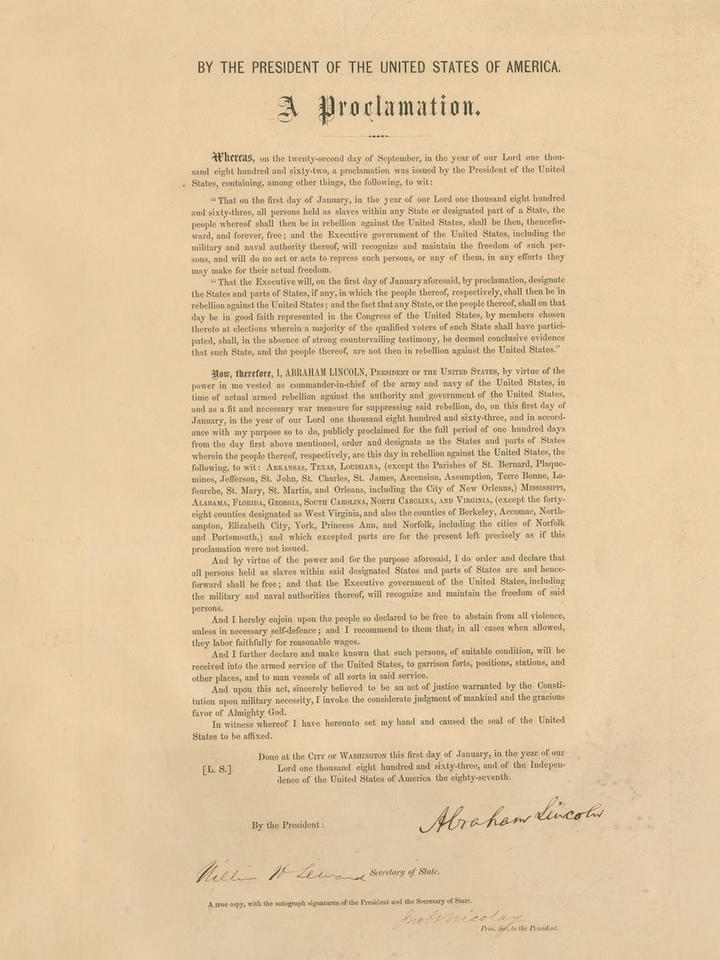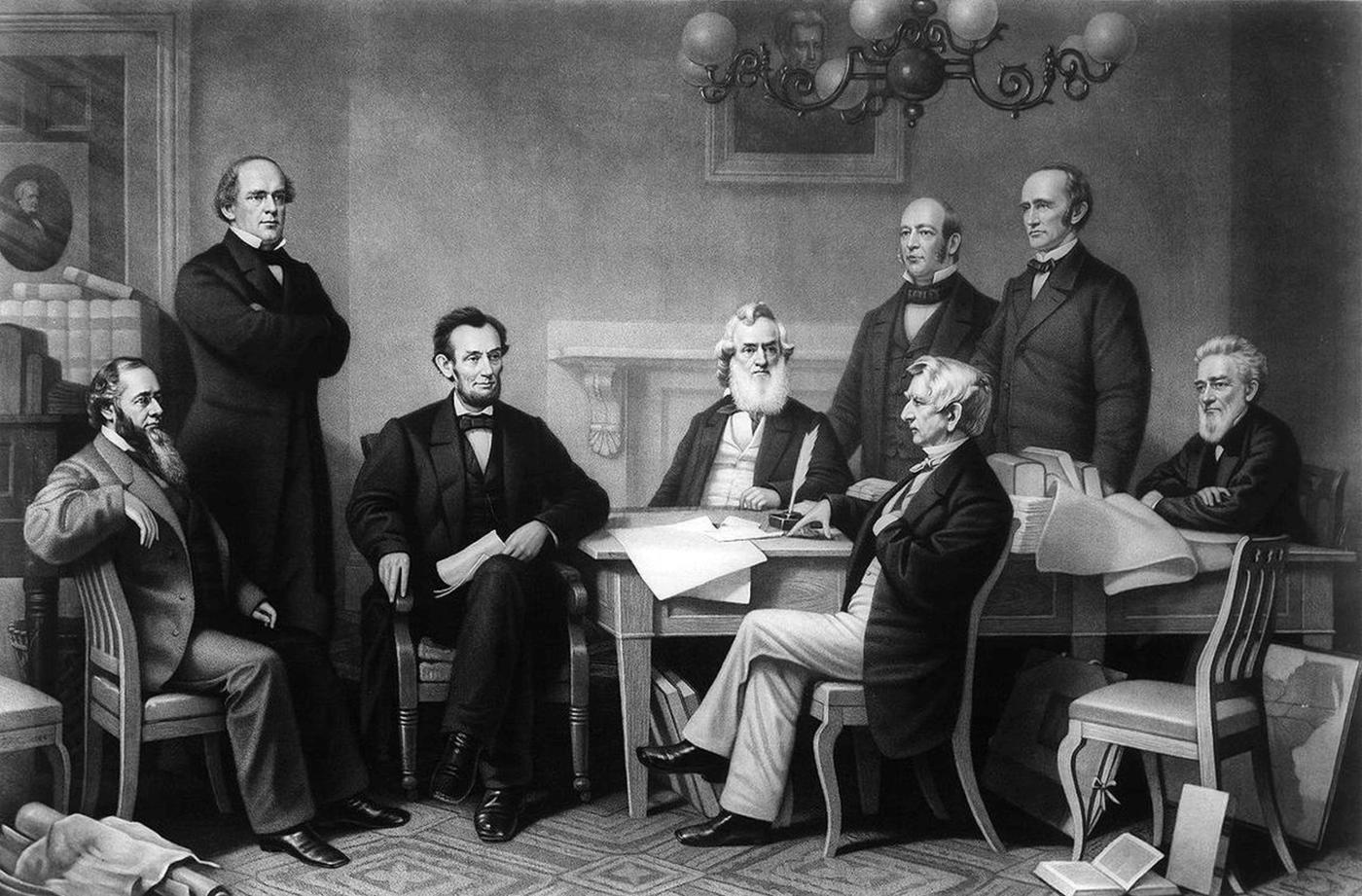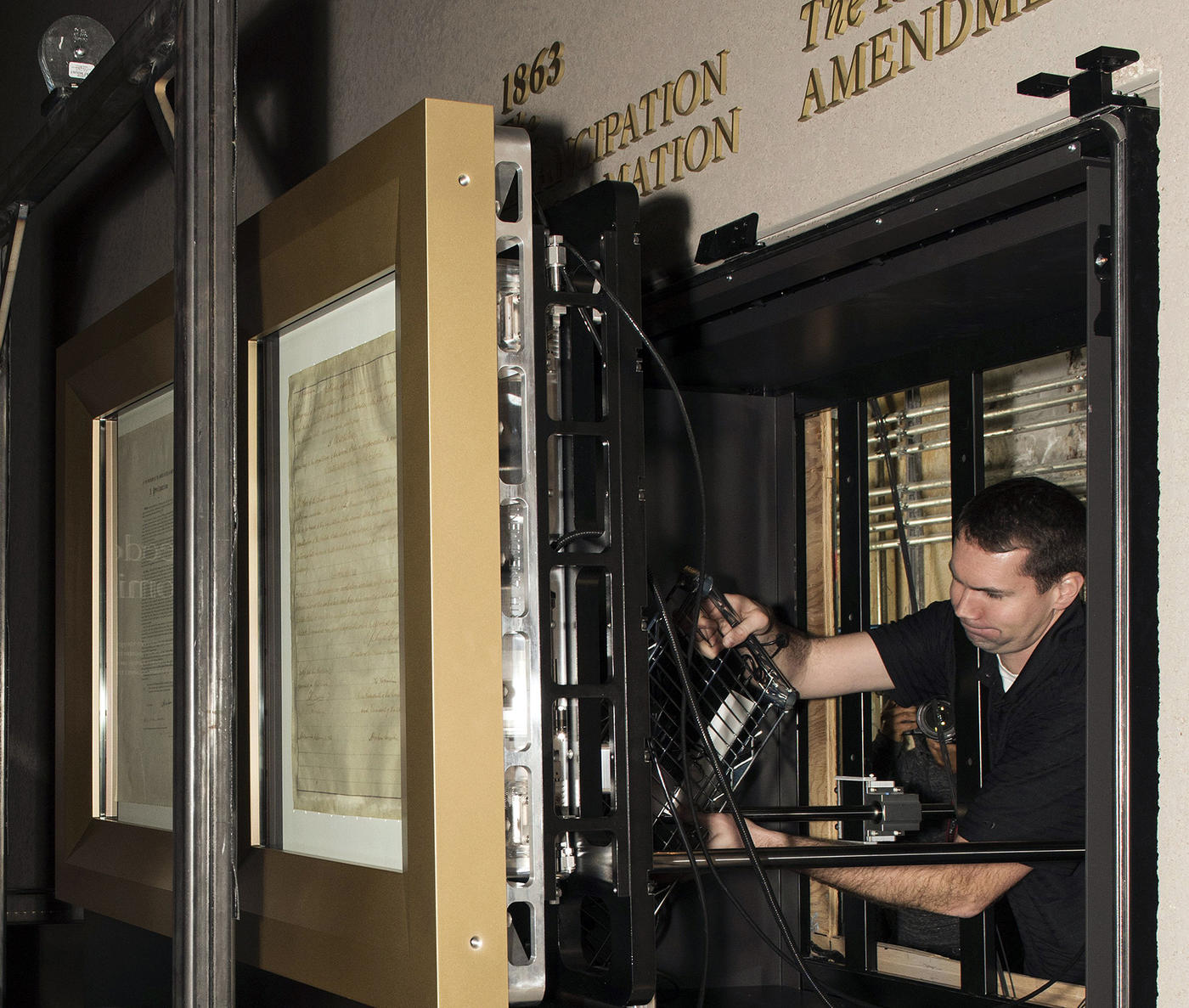The Emancipation Proclamation’s Custom Case Saves Document for the Future
- After receiving one of the original copies of the Emancipation Proclamation, the Smithsonian asked NIST experts to create a case that would preserve the document.
- NIST built a state-of-the-art encasement for the document, taking into account the document's specific needs.
- The Emancipation Proclamation remains on display for the public at the National Museum of African American History and Culture.
On Jan. 1, 1863, President Abraham Lincoln signed the Emancipation Proclamation, which made slavery illegal throughout the Confederate States of America.
Although the Civil War would rage for two more years, it now became a fight for freedom, as only a Union victory would ensure the end of forced labor for Black people in the South. However, it wasn’t until the 13th Amendment to the U.S. Constitution was ratified in 1865 that slavery and involuntary servitude were abolished across the entire nation.
More than 150 years later, a signed original copy of the Emancipation Proclamation is available for the public to see at the Smithsonian's National Museum of African American History and Culture, thanks to preservation efforts by the National Institute of Standards and Technology (NIST).


After the copy was given to the Smithsonian on long-term loan in 2017, museum officials asked NIST engineers to craft a special encasement for the cherished document.
The high-tech case is similar in design to ones that NIST previously fabricated and installed for five other historical icons, as well as a preliminary draft of the Emancipation Proclamation exhibited at the New York State Library in Albany, New York.

The Smithsonian encasement features two sections machined from a single block of aluminum to avoid seams. They are sealed together like the halves of a sandwich with O-rings.
Typically, engineers try to remove all oxygen from these types of encasements to preserve the documents. In this case, experts created an environment that was 96% argon (an inert gas) and 4% oxygen. A small amount of oxygen was needed to maintain the special type of ink, called iron gall ink, that was used on the proclamation.
The encasement has special sensors that monitor the internal pressure, temperature, relative humidity and atmospheric content of the case.
This copy of the Emancipation Proclamation, part of the museum’s “Slavery and Freedom” exhibit, is showcased in its state-of-the-art home next to a duplicate NIST-built case displaying a copy of the 13th Amendment. Both documents share the floor with a restored cabin used in the early 1800s to house enslaved families on a plantation on Edisto Island, South Carolina.
Did You Know?
- Abraham Lincoln considered the Emancipation Proclamation to be his crowning achievement as president. “If my name ever goes down in history, it will be for this act, and my whole soul is in it,” he said.
- Of the 48 copies of the Emancipation Proclamation signed by President Lincoln on Sept. 22, 1862, only 26 still exist. A handwritten and signed (both by Lincoln) draft of the document was sold for $3,000 in October 1863 (approximately $57,000 in 2018 dollars) at the Great Northwestern Fair in Chicago to raise money for a soldier relief fund. It was lost in the Great Chicago Fire of 1871.
- Enslaved people in Texas did not learn about the Emancipation Proclamation until June 19, 1865, two and a half years after it was enacted on New Year’s Day 1863. Historians suspect Texas slaveholders knew of the proclamation and chose not to free their slaves until they were forced by Union soldiers to do so. Juneteenth, the holiday commemorating that event, was recognized nationwide as a federal holiday starting in 2021.

